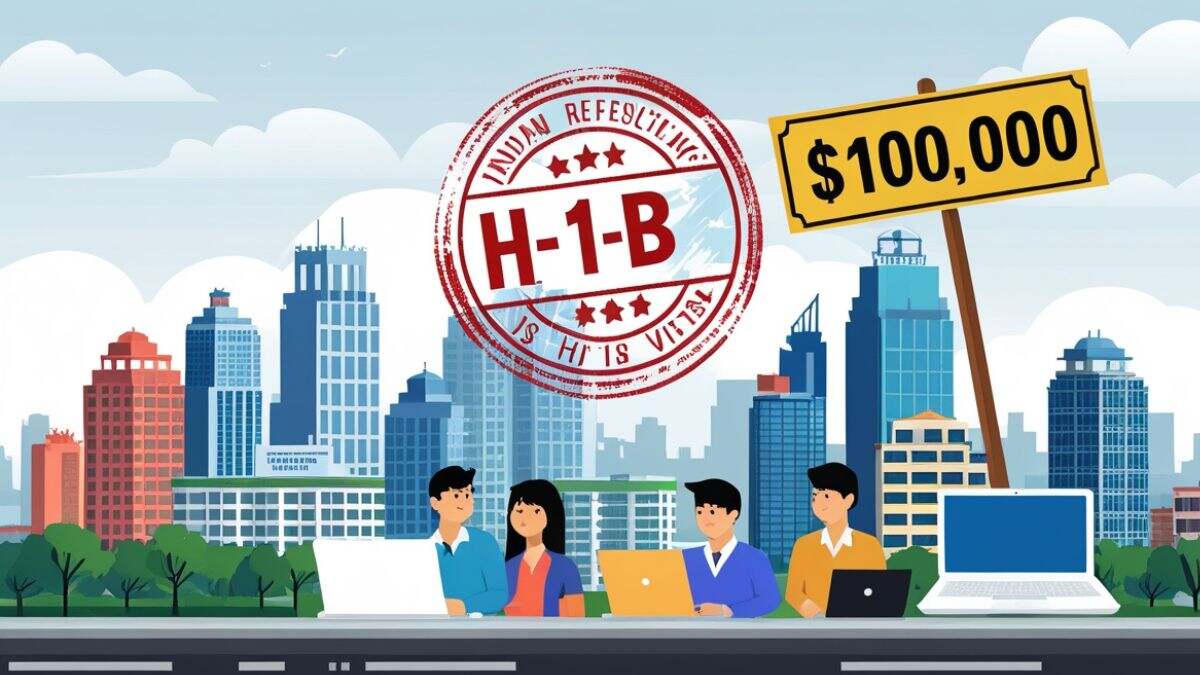According to Akash Puri, Director-International at India Sotheby’s International Realty, rising H-1B expenses may encourage top professionals to go outside of the United States.
H-1B Visa Impact
The White House‘s expansive new visa policy is upending the Indian real estate market. With effect from September 21, 2025, US President Donald Trump announced a decree imposing a hefty $100,000 yearly charge on the majority of H-1B visa requests. This move is expected to change the dynamics of both residential and commercial real estate in Indian metropolises.
With more than 71 percent of H-1B approvals in FY2024 going to Indian nationals, experts predicted that the additional charge would discourage onsite deployments and decrease foreign recruiting, which would have a major impact on tech workers‘ long-term housing selections and remittance-backed house purchases.
Residential challenges: declining demand in important IT centers
Cities that have long profited from the demand for NRIs and IT professionals, such as Bengaluru, Hyderabad, Pune, and Gurugram, may see a decline in the next quarters, according to real estate analysts.
Experts have identified three major risks: a decline in the demand for premium housing, particularly in areas that are popular with H-1B families and NRI investors; delayed decisions to buy because deferred US relocations may result in delayed home buying; and slower absorption of mid-to-high-end projects targeted at tech buyers.
According to analysts, for more than ten years, remittance-backed property purchases have been a quiet force behind metropolitan residential markets. A Delhi NCR-based real estate adviser predicted that the abrupt price increase would depress attitude among families traveling abroad, many of whom were depending on US assignments to support real estate investments back home.
Remittances Affect Housing Demand
India has the greatest remittances, with a large portion of that money going into real estate, according to Pareekh Jain, CEO of Pareekh Consulting. Remittances will decline as a result of the effect on H-1B visas, which will have a direct impact on real estate.
Layoffs in the IT industry, a key contributor to the demand for housing, have a second-order effect. Two tendencies will emerge. As more individuals relocate from smaller towns to metro areas or return from the US, the need for primary residence may increase, but real estate as an investment may decrease. Due to fewer remittances and employment instability, many would invest their excess cash into gold or equities rather than purchasing second or third residences. Therefore, the demand for real estate investments will decline even while the desire for reasonably priced one- or two-bedroom houses may increase, he added.
Indian housing demand is anticipated to be impacted by the projected six-figure H-1B visa cost, especially in IT-driven areas, according to Vishal Raheja, Founder & MD, InvestoXpert.
Demand may moderate in the premium and luxury market, which often depends on NRI customers and returns. Rising domestic consumption and India’s continued development as a global center for talent, entrepreneurs, and technology investments will counteract this, however. It highlights the need for the sector to concentrate on flexible financing options, rental ecosystems, and mid-segment housing, all of which are anticipated to gain more momentum,” he added.
Growth in the GCC might expand
The rapid expansion of Global Capability Centers (GCCs) has led market experts to identify a possible bright spot in commercial real estate.
Offshoring tactics will change as American businesses try to offset the increased costs of hiring and visas. Given their talent pools and cost advantages, Indian towns are probably going to experience a boom in office leasing and infrastructure development.
GCCs occupy 35–40% of office space in major cities like Bengaluru, Hyderabad, and Pune, according to CBRE statistics. Experts currently predict that number will rise sharply in 2026 due to operational consolidation and role reshoring.
What is Next?
The industry must prepare for a new age of global-local interaction as developers, purchasers, and investors reassess their positions. In this future, visa barriers might potentially influence the skylines of Indian cities.
According to Akash Puri, Director-International at India Sotheby’s International Realty, rising H-1B expenses may encourage top professionals to go outside of the United States.
“For luxury real estate, it implies new demand moving toward international markets and locations that provide lifestyle, access, and stability,” he said.

